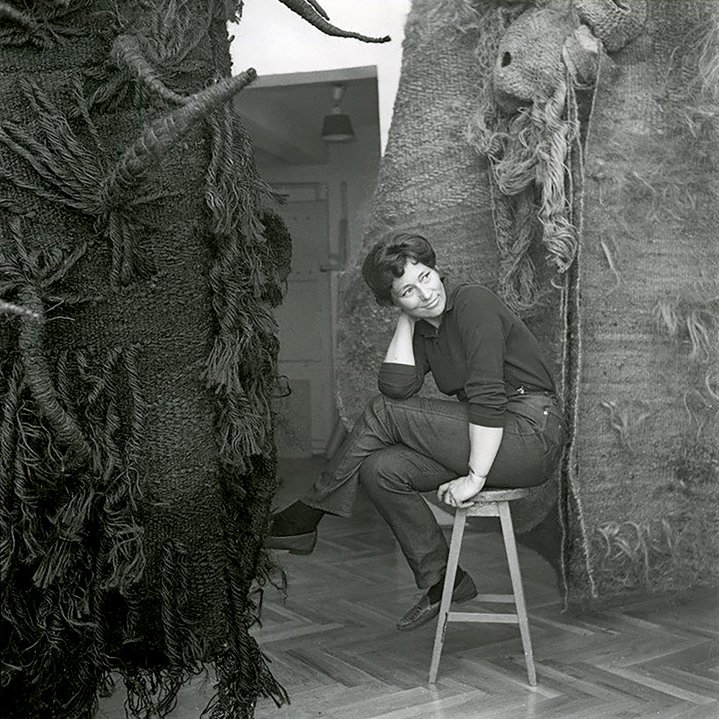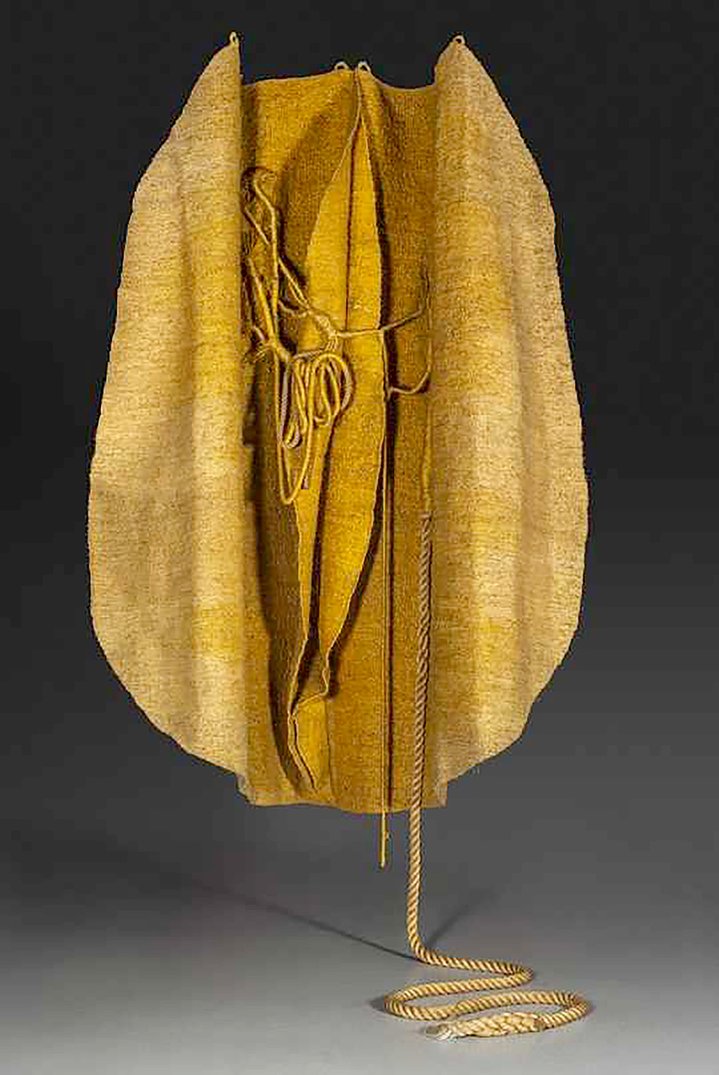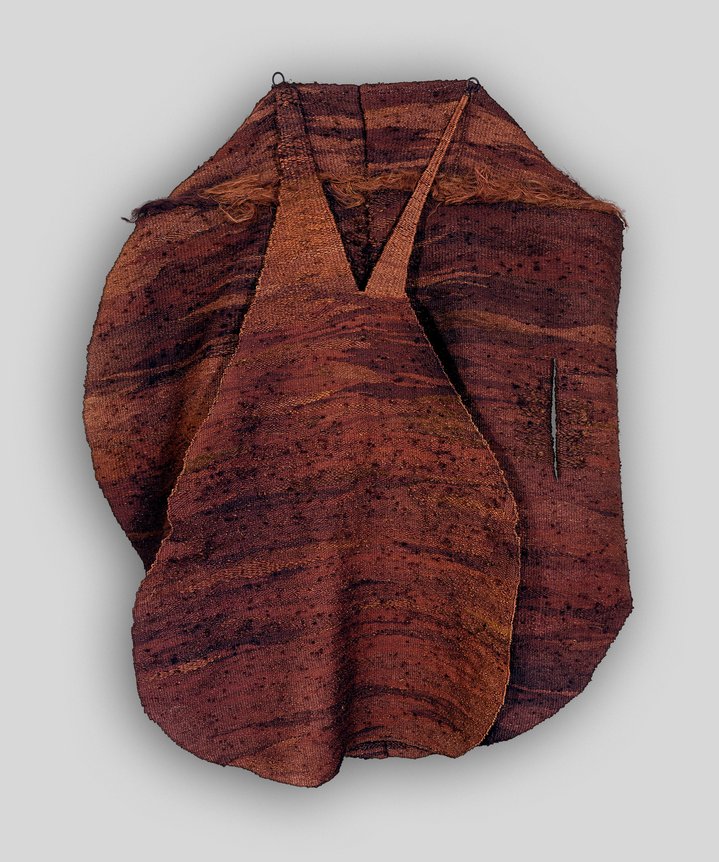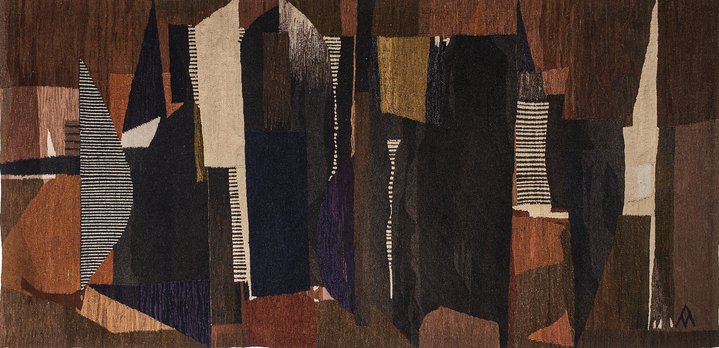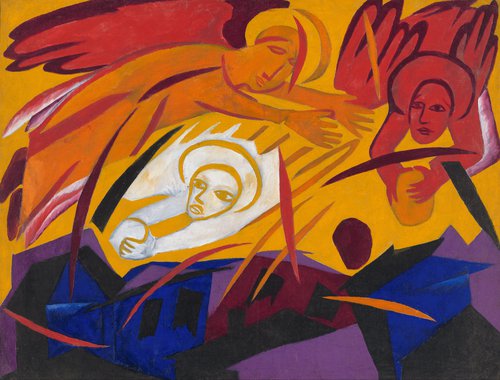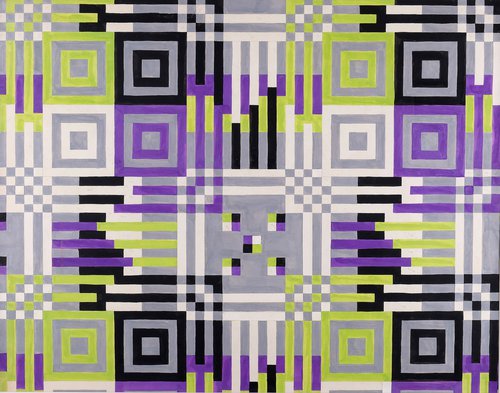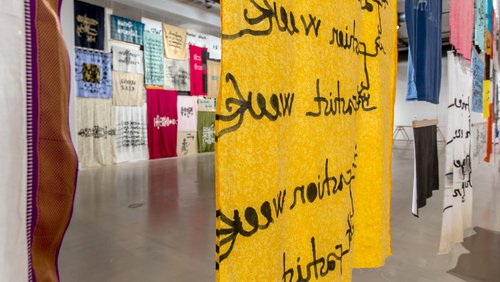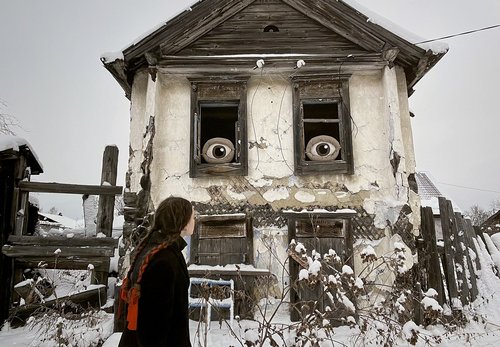Magdalena Abakanowicz. Every Tangle of Thread and Rope, 2022. Exhibition view at Tate. Photo Mark Westall
Soft power of textile art by Magdalena Abakanowicz
Polish born artist Magdalena Abakanowicz’s monolithic retrospective at Tate Modern in London expands our understanding of textile art and adds another female artist to the growing list of 20th century greats.
The exhibition title, ‘Every Tangle of Thread and Rope’, is taken from the artist’s personal statement made for her solo show at the Pasadena Art Museum in California in 1971. It sets Magdalena Abakanowicz (b. 1930) out as a contemporary with modernist roots. In the way that Cézanne caressed every brushstroke in oil on canvas, you imagine the artist nestling her eyes and teasing her figures over every small tangle of thread or rope. Yet tangles are often things we try to unravel, they are messy and incoherent, formed by chance as much as design, and that is the very ‘immaterial’ stuff of postmodernism. The exhibition title is also surely an invitation by the curators to us, the viewers, to be observant as we enter the dark, hushed space of the show in Tate Modern’s Blavatnik building. As Blake said, if we can see the world in a grain of sand, between the delicacy of thread, and the chunkiness of rope are there not a million miles to travel? If we enjoy luxuriating in the painterliness of our favourite modernist artists – and Cézanne is also on show at the Tate this winter - we can, too, luxuriate in the bristliness, and coarseness of hand-dyed sisal. In the first room a vertical slice has been playfully taken out of the corner of the wall, and through it you unexpectedly have a wonderful vantage point of a crowd of strange, hanging totems which are Abakanowicz’s Abakans.
Textile art may be the most fashionable new category in art history and on the art market, with wall hangings and textile sculptural works seen on every second booth at Frieze nowadays, yet it is reassuringly one of the most ancient. It is one of the most overlooked fields by art historians and curators until recently - all the main proponents of this art dissociated themselves from it – yet it is in truth rich with associations, references, and symbolism. It has long been associated with women rather than men, such as in Greek legend, Athena and Arachne two archetypal weavers, with associations of fertility and motherhood. It is women who play at Fate. A ‘she’ not a ‘he’ cuts the cloth or thread of our individual lives.
Like other major museums across the world, Tate Modern’s curatorial script has long been to promote female artists, but it also has reassessed textile art because of its long association with femininity. Over the past decade, in retrospectives of artists such as Russian-born Natalia Goncharova (1881–1962) and Ukrainian-born Sonia Delaunay (1885–1979) there was an insistent emphasis at Tate on their activities in clothing or textile designs. A real breakthrough show in this field was the Anni Albers (1899–1994) retrospective in 2018. Collectively, these curatorial approaches have shown us just how important textile art is. It is no coincidence that alongside the Abakanowicz show there is the sculptural hanging by Chilean artist Cecilia Vicuña (b.1948) in the Turbine Hall. In the past, in terms of programming, such a conflation of textile art may have been felt as ‘too much of the same thing at the same time’, now the Tate is modelling our mindset around an understanding that this art form really does matter.
Ironically it would have been straightforward to write textiles into modernist art histories from the outset because working with textiles fits perfectly into a mainstream modernist canon for its pre-renaissance, manual, tactile and formal qualities, and associations. But it was seen as decorative rather than fine art. Albers’ work has been described as ‘pictorial weavings’ which aligned it with modern painting, but it was always still decorative. Abakanowicz takes the medium further like her North American contemporary Sheila Hicks (b.1934), pushing into Kraus’s territory of the ‘expanded field of sculpture’ with her gigantic three-dimensional weavings made of sisal, horsehair, hemp and various natural fibres. Despite a modernist sensibility in her early works, in the abstracted shapes and form which the modernists pioneered, Abakanovicz’s work belongs to the post-war era riddled with its uncertainties in the face of socio-political traumas. As a girl of thirteen, the artist witnessed her mother’s arm being wounded, shot at by a Nazi soldier in her own home. This trauma rips through her art, there are fibrous appendages, and vertical openings like wounds in her Abakans.
But unlike Louise Bourgeois (1911–2010) who uses staged psychodrama and narrative in her art to appease her childhood trauma, Abakanowicz finds solace in nature. For the viewer there is still disturbance. Many critics have used negative words to describe the ‘Abakans’, these huge, rugged, hanging three-dimensional textile sculptures, described variously as ‘unsettling’, ‘provoking discomfort’ and ‘surprising’. The artist herself admitted they ‘caused irritation’. And yet for the artist they made her feel safe and warm, perhaps in the way a cocoon protects something fragile growing inside it. It was a female critic at the time who first called the works ‘Abakans’, and the artist herself went on to accept this nomenclature and even use it herself. For the artist they were reflections of her own self.
The scale of the Abakans, when hung together in the Tate exhibition, is overpowering. They dampen sounds in the room, you can smell them. Despite the dissonance rather than harmony which these works create, they require the viewer to find an emotional connection with them, as if the viewer is encountering something entirely natural. ‘For I want him/her to have the very intimate contact with them, the same contact you could have with your clothes, animal skins or grass’, wrote Abakanowicz in her artist statement for the 1971 show. For our earliest ancestors, the first textiles were made for humans to cover and protect themselves, it is hard to find anything more universal.
If Bourgeois is the Arachne of art history, the quintessential mother-spider figure, perhaps Abakanowicz is its Athena. The images on the legendary fabrics woven by the Greek Goddess were so perfect that people thought they were real, and if we translate this magic into our contemporary sensibility, where we no longer have such faith in visual trompe l’oeils, there is the sense that Abakanowicz’s sculptural weavings are a real presence. The artist emphasized how she created them with her fingers and hands, using no other tools, a process devoid of artifice in which she built up a rapport with her subject.
In recent years, with the rise in interest on the market of female artists in general her work has become highly valued. Her 1989 monumental sculptural group of fifty anthropomorphic figures made out of burlap called ‘Crowd III’ fetched 2.82 Million Euros at auction in 2021, establishing a record for the highest price ever paid for an artwork at auction in Poland.
Abakanowicz’s family had a country estate in Poland where she grew up and recollection of her earliest sensations of being in the forest as a child threads through her oeuvre. Born into an aristocratic family, her father a Russian-Tatar and her mother from the Polish nobility, with the rise of socialism she hid her origins, changed her first name, and ended up sharing a tiny studio with her husband, working on a borrowed loom until the mid 60s as her career took off. Remarkably for an artist pushing aesthetic and formalist boundaries behind the iron curtain, she was able to travel abroad, taking part in exhibitions and numerous biennales. In fact, her international outreach was almost unparalleled for an artist living and working in Socialist Europe and who never emigrated, aided by the fact that textile art was then seen as decoration.
It is hard to think of an artist who has explored the structural and expressive qualities of textile as a medium with such originality and power, as Magdalena Abakanowicz. Anni Albers remained focussed on pictorial textiles, so as Abakanowicz’s work became sculptural, there was no great European modernist textile artist upon which she could build her legacy. The modernist masters were not interested in soft fibres, and it is as if Abakanowicz had to build her contemporary practice on the top of her own modernist foundations, a considerable task. The Tate has done her great service by eschewing a chronological survey of her entire career, and instead curating the exhibition around the two crucial decades which chart the evolution of her textile art into the Abakans. This represents her biggest achievement as an artist and is the real measure of her greatness.
Magdalena Abakanwicz. Every Tangle of Thread and Rope
London, UK
November 12, 2022 – May 21, 2023






